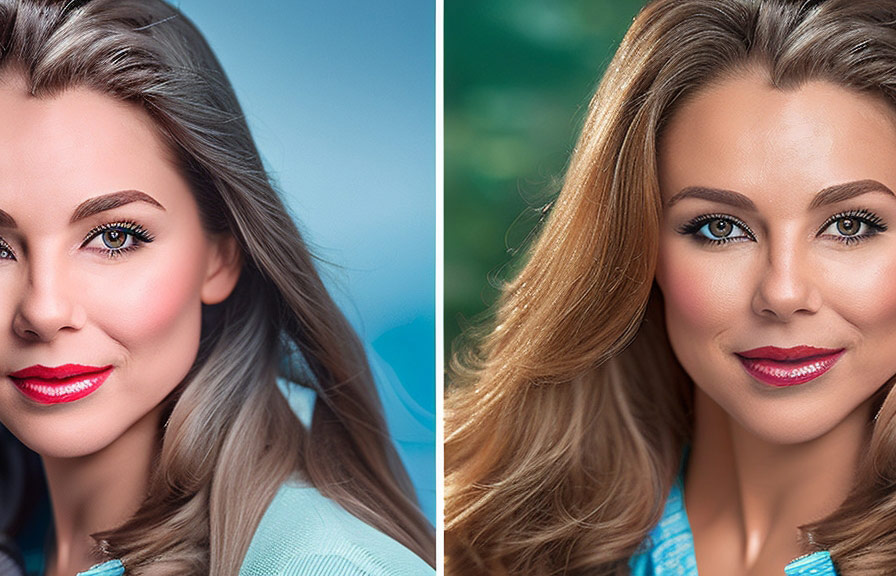Did you know that the first portrait photograph was taken in 1839 by an american photographer named robert cornelius? since then, portrait photography has come a long way. nowadays, thanks to advanced technology and software like photoshop, we can take our portrait photos to the next level.
In this post, we will explore how portrait photo editing works to enhance your beauty and personality, using techniques such as portrait retouching and portrait editing to create stunning images.

The magic behind portrait retouching
Portrait retouching is an essential aspect of portrait photo editing. it involves making subtle adjustments to your portrait images, such as removing blemishes, smoothing out skin texture, and enhancing the overall appearance of the subject. the goal of portrait retouching is to create a flawless, yet natural-looking image that showcases
Your best features and true personality.
One of the most popular tools for portrait retouching is adobe photoshop. with its vast array of features, photoshop portrait retouching can transform an ordinary photo into a stunning work of art. let's dive into some of the common techniques used in portrait editing photoshop:
Skin retouching
One of the primary goals of photoshop portrait retouching is to achieve smooth, even skin. this can be done using various tools and techniques, including:
- Healing brush tool: this tool is perfect for removing blemishes, such as acne, scars, and wrinkles. simply select the healing brush, sample a clean area of skin, and then paint over the blemish to make it disappear.
- Dodge and burn: this technique involves lightening and darkening specific areas of the image to create depth and contour. use the dodge tool to brighten highlights, and the burn tool to darken shadows.
Eye enhancement
The eyes are often the focal point of a portrait, and enhancing them can make a huge difference in the overall appearance of the image. some ways to make the eyes pop include:
- Brightening the whites of the eyes: use the dodge tool to gently brighten the whites of the eyes, making them appear more vibrant and alert.
- Enhancing the iris: to make the eyes really stand out, add some contrast and saturation to the iris using the curves adjustment layer and the hue/saturation adjustment layer.
Hair retouching
A well-groomed hairstyle can add the finishing touch to any portrait. some useful hair retouching techniques in portrait editing photoshop include:
- Removing flyaways: use the clone stamp tool to carefully remove stray hairs and flyaways that may be distracting or unflattering.
- Adding shine: create a new layer, set the blending mode to soft light, and use a soft white brush to paint subtle highlights on the hair, giving it a healthy shine.
The art of composition and cropping
A well-composed portrait photo can make a lasting impression. the composition and cropping of your portrait images play a crucial role in enhancing your beauty and personality. some tips for creating a visually appealing composition include:
- Rule of thirds: imagine your image divided into nine equal parts by two equally-spaced horizontal lines and two equally-spaced vertical lines. place your subject at the intersection of these lines for a more dynamic and balanced composition.
- Focal length: use a longer focal length, such as 85mm or 105mm, to create a flattering perspective and minimize distortion.
When cropping your portrait photos, consider the following:
- Leave some breathing room around the subject.
- Be mindful of the background and ensure it doesn't distract from the main subject.
- Keep the eyes in the upper third of the frame for a visually balanced image.
Final touches and exporting
Once you've completed the portrait retouching and composition adjustments, it's time to add the final touches and export your image. consider the following steps:
- Color grading: apply a color grade to your image to create a unique mood or atmosphere. this can be done using adjustment layers such as curves, hue/saturation, and color balance.
- Sharpening: apply a subtle amount of sharpening to your image to enhance the details and make it appear more crisp and clear.
- Export: save your final image in a high-quality format, such as jpeg or tiff, and make sure to use the appropriate color profile (srgb for online use, and adobe rgb for print).
Conclusion
Portrait photo editing is an essential skill for creating beautiful, captivating portrait images that truly showcase your beauty and personality. by mastering techniques such as portrait retouching and composition, you can elevate your portrait photos to new heights and leave a lasting impression on your viewers.
Happy editing!
